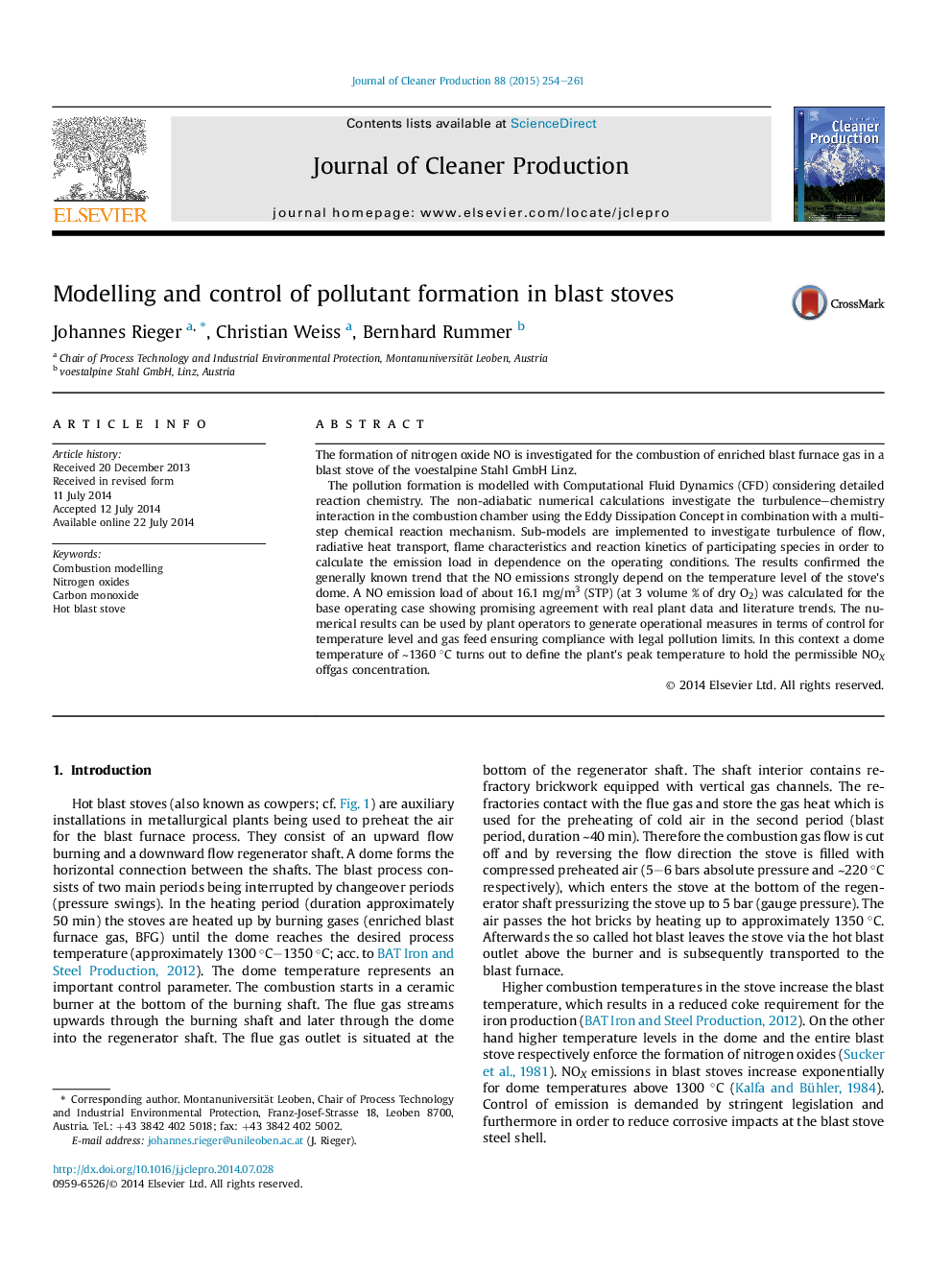| Article ID | Journal | Published Year | Pages | File Type |
|---|---|---|---|---|
| 1744776 | Journal of Cleaner Production | 2015 | 8 Pages |
The formation of nitrogen oxide NO is investigated for the combustion of enriched blast furnace gas in a blast stove of the voestalpine Stahl GmbH Linz.The pollution formation is modelled with Computational Fluid Dynamics (CFD) considering detailed reaction chemistry. The non-adiabatic numerical calculations investigate the turbulence–chemistry interaction in the combustion chamber using the Eddy Dissipation Concept in combination with a multi-step chemical reaction mechanism. Sub-models are implemented to investigate turbulence of flow, radiative heat transport, flame characteristics and reaction kinetics of participating species in order to calculate the emission load in dependence on the operating conditions. The results confirmed the generally known trend that the NO emissions strongly depend on the temperature level of the stove's dome. A NO emission load of about 16.1 mg/m3 (STP) (at 3 volume % of dry O2) was calculated for the base operating case showing promising agreement with real plant data and literature trends. The numerical results can be used by plant operators to generate operational measures in terms of control for temperature level and gas feed ensuring compliance with legal pollution limits. In this context a dome temperature of ∼1360 °C turns out to define the plant's peak temperature to hold the permissible NOX offgas concentration.
